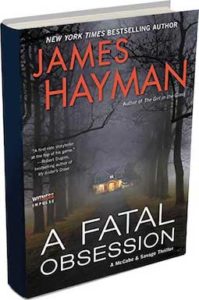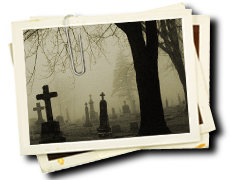Murder We Wrote
James Hayman: When asked what she did for a living, another crime writer, I believe Chelsea Cain, responded “I kill people for money.” Well, so do I. And so does everyone else who writes mysteries and thrillers for a living. The vast majority of our books almost by definition involve one or more villains offing one or more victims.
In real life murder tends to be a fairly prosaic if unpleasant affair. Husbands killing wives. Gangbangers killing rivals. Or, saddest of all, gun nuts walking into movie theatres or elementary schools and blasting away at strangers. Most of it horrifying. None of it particularly entertaining.
It is our peculiar and often challenging task as writers to make murder interesting, involving, entertaining and yes, sometimes, horrifying, but in a way that involves the readers’ imaginations far more than the bloody chaos that goes on in the homes and streets of America.
There are many ways we go about this.
The writer can go for the cringe-worthy approach. Hannibal the Cannibal eating his victims’ faces being a prime example
But there are other ways of making murder engaging. One is the use of strange weapons. A fellow writer and friend of mine named Joe Brady once considered committing murder in one of his books by having the victim be bitten by the poisonous pufferfish. The pufferfish, one of the few fish that can be considered cute to look at, emits a poison for which there is no antidote that kills by paralyzing the diaphragm, causing nearly instant suffocation.
The pufferfish not withstanding, I think my all-time favorite in the weird weapon category can be found in Roald Dahl’s classic short story Lamb to the Slaughter. The heroine (villain?) of the piece is dear, sweet Mary Maloney who, when told by her policeman husband that he is planning to divorce her, becomes so upset that she whacks him over the head with the frozen leg of lamb she was planning to cook for dinner. When she realizes that her husband is indeed dead Mary, in a moment of inspiration, puts the murder weapon in the oven and roasts it. Since the dead husband was a veteran cop, Mary knows all the detectives who come to the house to investigate the killing. After these worthy fellows spend a fair amount of time searching the house for the likely murder weapon (could it be a sledgehammer? A spanner? A heavy vase?), Mary convinces them to stay for dinner. Naturally, the main course is roast leg of lamb.
An interesting variation on Dahl’s technique of having the cops eat the murder weapon is Fannie Flagg’s idea of having them eat the victim. This seemingly ghoulish denouement occurs in Ms. Flagg’s Fried Green Tomatoes at the Whistle Stop Café where the heroine (the owner of the café, which is well known for its delicious barbecue) offs a bad guy by hitting him over the head, not with a leg of lamb, but with a frying pan. She then tosses the body into the café’s barbecue oven. When the bad guy is thoroughly smoked, sauced and cooked, she cuts him into little pieces and offers some to the local sheriff who eagerly gobbles the delicious goodies down. I’m told barbecued human tastes remarkably like barbecued pork but I have no intention of testing the proposition.
For someone like me, who suffers from claustrophobia, one of the scariest way of dying has to be being buried alive. This frightening fate is beautifully presented in Michael Kimball’s novel Undone. The story centers around an unscrupulous wife who somehow convinces her husband to agree to climb into a coffin and be buried as part of an insurance scam. Of course, she promises to dig him up later and share the proceeds. Of course, she doesn’t. In the meantime, readers get to spend agonizing hours inside the coffin under six feet of soil suffering along with the poor schmuck of a husband. If you’re wondering why he ever agreed to such a thing, I won’t offer spoilers. You’ll just have to read the book.
The plot of my own first McCabe/Savage thriller, The Cutting, also centers around a particularly unpleasant way to die. The Cutting features a villain who runs a lucrative business selling illegal heart transplants to billionaire octogenarians suffering from advanced coronary disease. These are folks who can’t qualify for legitimate transplant programs because of their age but who do have the funds to seek alternate solutions. Our bad guy charges each of the billionaires a flat fee of five million dollars for a healthy young heart. But where, you might ask, do the hearts come from? In keeping with the spirit of the times, all are locally sourced, being cut from the bodies of attractive young women who are first kidnapped and then held captive until their hearts are needed. When the time is right our villain wields his scalpel and…well you can imagine the rest.
What makes the murder compelling in my latest McCabe/Savage thriller, The Girl in the Glass, is neither the choice of weapon nor the brutality of the crime. Rather it is the fact that the two young women who are killed are physically identical members of the same family who are murdered in precisely the same way one hundred and eight years apart. The puzzle for my two detectives, Maggie Savage and Michael McCabe, is why the killer went to such lengths to carry out a near perfect imitation of a murder that happened more than a century earlier. And, of course, to figure out who the hell is he.

